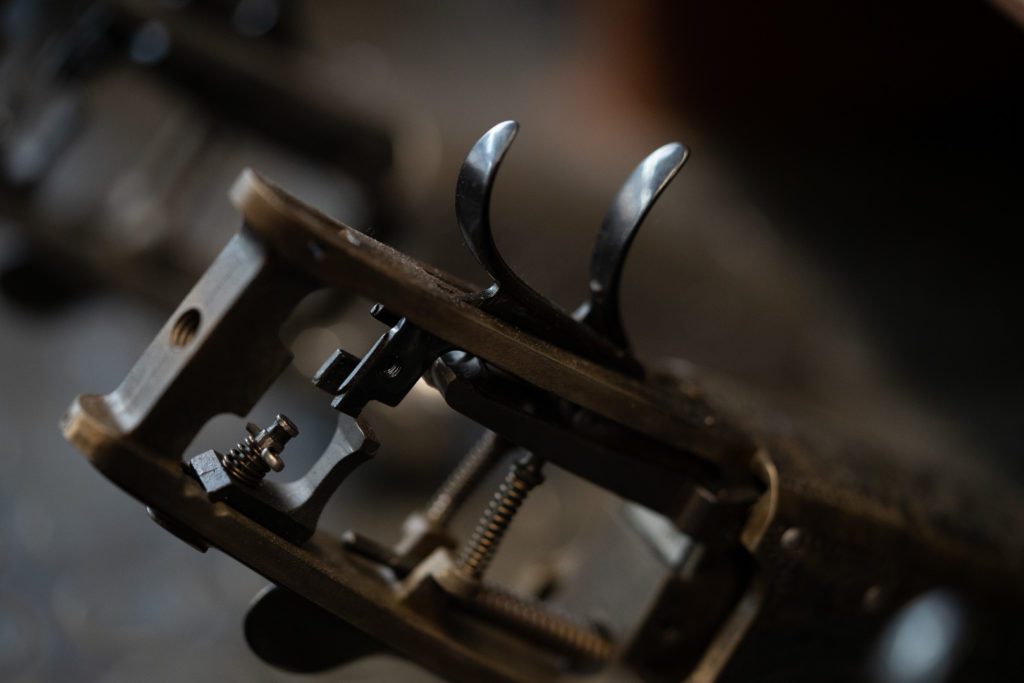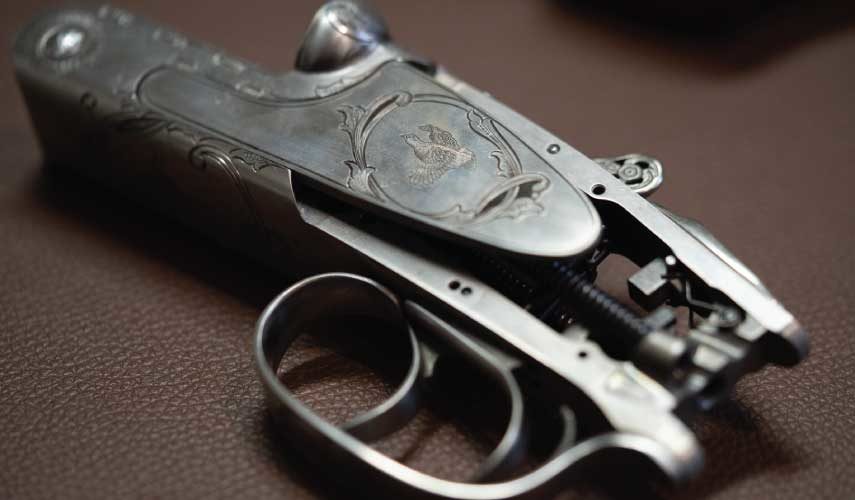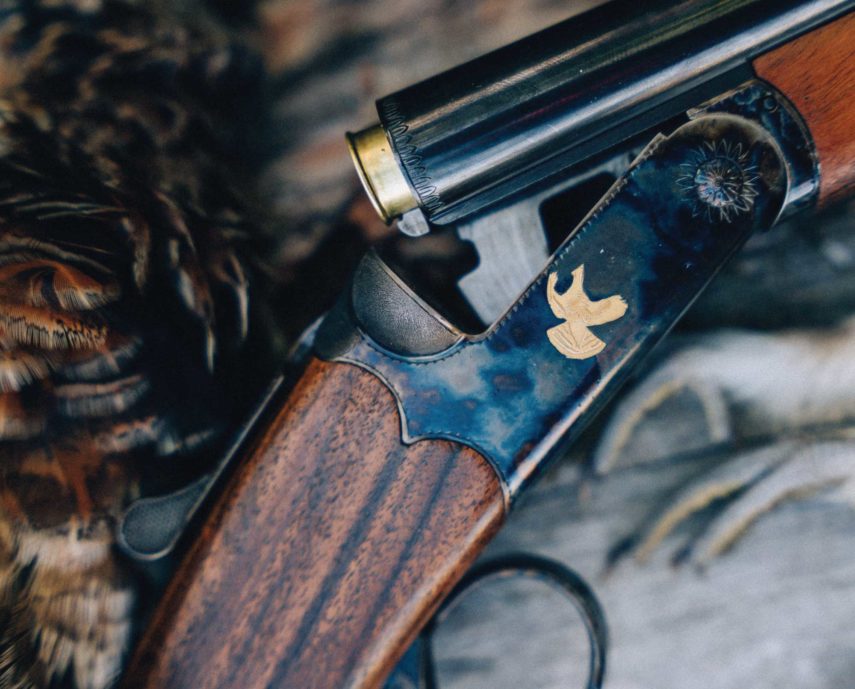Exploring the mechanics, methods and methodologies of single and double trigger options on double guns.
Just like Coke needs a Pepsi, Ford a Chevy, triggers on shotguns need two options (if you shoot a double gun that is). This, like most things in the world of double guns, is a gross simplification of the complexities that surround trigger mechanisms, but for the purposes of this article we are going to focus on the age-old question; is one trigger better or two?
Inherently this question is one of personal preference. I know folks who, no matter the amount of practice, would never fully be able to switch from their single trigger roots. After the first shot, they would be left pulling that front trigger, again and again, watching as a bird or clay disappear over the horizon, wondering why their follow-up never came. To be honest my switch to side by sides and double triggers left me doing just that on several occasions.
Like so many of us, I grew up shooting single trigger guns, a youth model 870 at first, and eventually a Remington 11-96. (I digress that if a person wants to shoot a pump, I would suggest making it the first gun one learns how to shoot, as like riding a bike, you never actually forget how to cycle the action despite years of time away from them.) That being said, I was very much accustomed to single triggers and the switch for me took some time.
My switch came as a result of wanting to shoot the broke down old American side by sides I was buying at gun shows and restoring to function. It was nice to be able to take that 20 gauge Stevens 315 out and shoot some woodcock with it, and in fact, it was the gun I learned how to shoot two triggers on. It wasn’t a Parker, Greener, or GBE’s Purdey, but a kid can dream, right? There was just something about carrying a side by side and I was willing to sacrifice a second shot to do so. And, I think it made me a better shooter. Knowing I may not get off the second barrel made me take my time with the first!
How they work.
As far as actual mechanisms are concerned, double triggers tend to be simpler. Trigger mechanisms consist of moving parts, and it could be argued that the fewer moving parts to affect the action in question (firing the gun), the better. In cocking a double gun, a spring is compressed, storing energy. This spring is compressed during opening (cock on open) or closing (cock on close). The compressed spring is held by a combination of the sear and trigger. Generally, there are notches and corresponding surfaces on these parts that ‘catch’ on one another. When the trigger is pulled, it disengages the sear, which in turn releases the spring and the energy is transferred to a hammer (or hammer and firing pin) which strikes the primer and fires the shell.
This process may seem very complex (or simple) depending on your level of familiarity with double gun triggers. In any case, a gun with two triggers operating independently will allow the shooter the ability to shoot barrels in left then right or right then left operation. In shotguns with two barrels, typically chokes are different in each, so the shooter has the ability to choose the choke they shoot based on the target presentation in the field. I will admit to occasionally doing this in the field, primarily when a long bird presents itself, switching to the second trigger with tighter and thus more appropriate choke.
Additionally, in two trigger guns, if one trigger mechanism fails, the second may still function properly leaving the shooter with at least one working barrel; a matter of great consequence when facing down a charging Cape Buffalo. Or if you are far distant from any gunsmith or tools to work on your gun.
Single triggers, at least when double guns are concerned, have the complex task of doing the same job as described above, twice in succession. Single triggers typically set and reset based on mechanical or inertial mechanisms. Inertial triggers use a weight and the recoil of the gun to move to their second position. The recoil is required for the gun to fire on the second pull. If for example, one has a bad primer on the first barrel, no second shot will come because the recoil was absent to reset the trigger. This is not so with mechanical triggers. Two pulls should result in both hammers falling, so the second barrel would (in theory) fire.
There have been numerous single trigger designs over the years, like the Hunter One Trigger in LC Smiths or Miller Single Triggers, installed on so many guns as an upgrade. British single triggers with bob weights and those with three pulls (the middle pull happens unbeknownst to the shooter during recoil). The one thing that all single triggers have in common is an added layer of complexity over their two trigger companions. They must all somehow utilize a mechanism that swaps from one engagement to the other, and then reset during the normal cocking operation of the gun.
Barrel selectors located in some tang safeties available on over/under guns like the RFM SK Field, or safeties that actually shift left or right, like on the Browning Superposed address the idea of selecting one barrel over another in a field situation, though it could be argued that having to move part of the tang safety is more complicated than simply switching triggers. Additionally, modern single triggers have evolved and typically function with great reliability.

In the end, it’s the shooter’s choice.
In my years in the gunsmith shop, I can say that I saw numerous guns of both types in for trigger work. Some double trigger guns notorious for issues, some single trigger ones, and unfortunately, I have been the shooter when both types have malfunctioned and doubled. Doubling, though more uncommon in two trigger guns, can happen in both trigger styles. Single trigger shooters can accidentally pull the trigger twice during recoil resulting in a ‘double’ of sorts. Improper sear engagement on a two trigger gun can drop the second hammer during the impact of recoil shooting the first barrel.
All of this is to say that at least in my view, there is no winner here. Single vs double, it is the shooter’s preference that wins in the end, dictated heavily by which trigger style was installed by the factory. One might have a hard time finding a double trigger over/under, or a single trigger side by side if they were not offered as factory options.



0 Comments for “Choosing Single or Double Trigger?”